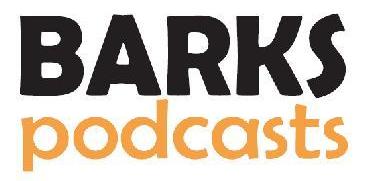
18 minute read
you have too much to do
A Tale of Two Selves
In the first of a two-part article, Niki Tudge explains how pet professionals can learn to enjoy more success with their virtual or live training programs by implementing motivational interviewing and commitment strategies
Advertisement
Motivational Interviewing works on the principle that people experience ambivalence about change and that it is normal for there to be a disconnect between the client’s own stated goals and their actual behavior
© Can Stock Photo / kgtoh
Professional pet trainers have every right to expect that what they learn in certification programs will also fully prepare them to manage their clients through the necessary behavior change to support a successful pet training program.
While new protocols and training methods may emerge, or new research may alter our understanding of how best to approach pet training sessions, the premise is that the core knowledge and skills required by a professional are covered in most available educational programs. Although professionals may be satisfied with the skill and knowledge they receive through their certification process, by their own admission, they may also be left unsure of how best to approach and create behavior change programs when it comes to their twolegged clients. Further complicating matters is the disconnect between the apparently idealistic application of behavior change programs and the practical realities of working “in the trenches” with real people. The reality is that, broadly speaking, the educational courses and programs professionals attend cannot possibly prepare them to work with the human side of the leash as well.
The personal trainer who is equipped with the indispensable skills of behavior change is not only better prepared to face a variety of clients, but also to inspire powerful change within them – Claire Dorotik‐Nana (2019)
In our industry, a successful training program also requires a pet’s guardians to make changes to their own behavior and living environment. But this part of the requisite skill set is frequently omitted from professional curriculums.
As a result, we appear to be missing the mark on an industrywide scale when it comes to providing the necessary education to support pet professionals in their need to change human behavior. While they may be armed with the relevant academic knowledge and skills then, their success as people trainers is actually predicated on changing their clients’ personal behavior in their interactions with their pets. And what they need and what has been provided through their education may be two different things entirely.
Pet professionals need uptodate, evidencebased and innovative approaches to changing human behavior, not only for their individual case success but also to promote the humane and ethical side of pet training.
The ready availability of accurate information, education, and training for both professionals and guardians has also seen the spread of problematic – and even dangerous – misinformation via poorly researched television shows, punitive “personality” trainers and illinformed educational forums. And so we need to, in fact we must, question how effective we are, not only in changing an individual client’s behavior, but also the culture of punishment and outdated training approaches in the longterm.
Transforming Client Behavior
Pet professionals are often under intense pressure, possibly more than ever now due to COVID19, to create changes in pets’ behavior. But using virtual systems to help coach clients through training programs can stretch their people skills. In the absence of a systematic approach to gathering information, they can be left feeling stumped, demotivated and awkward instead of empowering and inspiring the client.
As trainers, we may feel the need to quickly prove the efficacy and efficiency of our methods to our clients. Many of us strive to stand out amongst the competition as individuals advocating for humane, effective approaches. Lacking speedy results, we may fear the abandonment of clients moving instead towards quick solutions and electronic devices, many of which leave pets in peril. If we do not understand them, what stage of change they may be in and their motivations for change, then their ambivalence and mitigating personal factors can hinder our efforts.
Inspiring our clients to change must begin with understanding them on a fundamental level. As I so often say, we must first engage so we can educate and empower! Inspiring our clients to take on the task of not only training their pets but changing their own behavior is paramount to their—and our—success. Our progressive training movement, our own personal emotional wellbeing, and the pet’s future depend on it.
Human Behavior Change
There are numerous ways that our understanding of human behavior change can support our successes. First, our understanding of the Transtheoretical Model (or Stages of Change Model) of behavior change (now refined into a set of six distinctive stages) is important. The model describes the thoughts, feelings, and behaviors of people in the process of making a change. Later editions explained the motivational conflicts people experience when making a change and how best to manage them through this (LaMorte, 2021).
If we develop the skills to identify the stage of change clients are in, we can better help them navigate through the changes brought on by our training program recommendations. Professionals who utilize pivotal relationshipbuilding skills will develop a strong rapport with their clients, which enhances client motivation and empowerment. If we can harness the skills of motivational interviewing and raise our clients’ awareness of the benefits of change, it could help shift their decisional balance towards actually making the change.
Client motivation is important and by harnessing the three core elements of mastery, autonomy and purpose, we can ignite their intrinsic desire for change. Thus, recognizing the necessity and mechanics of implementing sound commitment strategies into our client consulting sessions will enable us to dramatically motivate and maintain change.
For the sake of concision, I will focus here on the strategies I consider most germane to our current operating environment: motivational interviewing (MI) and commitment. The understanding and application of these two strategies can help professionals manage client changes more efficiently and favorably, and I believe they can be quickly implemented.
Motivational Interviewing
MI was introduced as a counselling technique in the mental health field with substance abuse patients in 1982. Developed by clinical psychologists William R. Miller and Stephen Rollnick, it has now become a widely accepted method of assisting any type of behavioral change and is therefore valid to our use in the approach of pet guardian training.
MI works on the principle that people experience ambivalence about change and that it is normal for there to be a disconnect be

tween the client’s own stated goals and their actual behavior. How often does this ring true for pet trainers? We attend appointments with clients prepared to support them with a behavior change program, only to experience noncommitment and/or a reluctance to implement recommendations at best, or anger, frustration, and/or objection at worst.
The goal for professional trainers and the key to their success is to partner with clients. This is best achieved when they are able to unmask discrepancies between the client’s goals versus their actual behavior during the motivational interview. This unmasking brings about an understanding that can help the client recognize their own internal resistance to change and how that can thwart the entire program. Interviewing that focuses on a client’s motivation draws upon the dual universal feelings of selfactualization and ambivalence; it activates the capacity for beneficial change that everyone possesses (Miller & Rollnick, 1991).
SelfActualization
MI as a behavioral change method functions on the belief that clients possess the capacity and desire for selfactualization, i.e. they want to operate at their full potential and achieve their goals. It also acknowledges that the power to change is within our clients, not us, if we can harness and manage the process. Ambivalence is a normal part of any change process, yet when left unchecked will be a key obstacle to achieving mutually desired results. A collaborative partnership, an empathetic and supportive approach with a clearly defined style, facilitates change more effectively than an overly directive, argumentative, or shaming style that decreases motivation.
According to Miller (1996), MI is a counseling style based on a few assumptions, including that ambivalence about change is normal and constitutes an important motivational obstacle in recovery. Ambivalence can be resolved by working with our clients’ intrinsic motivations and values. The alliance between us and our client is a collaborative partnership to which we each bring important expertise. An empathic, supportive, yet directive, counseling style provides conditions under which change can occur. Direct argument and aggressive confrontation may tend to increase client defensiveness and reduce the likelihood of behavioral change.
Pet professionals need uptodate, evidencebased and innovative approaches to changing human behavior
© Can Stock Photo / ivelinradkov
A collaborative partnership, an empathetic and supportive approach with clearly defined style, facilitates change better than an overly directive, argumentative, or shaming style that decreases motivation and reduces change efforts

© Can Stock Photo / robwilson39
DorotikNana (2019) proposes the following as the five principles of
• Expressing empathy through active listening. • Uncovering ambivalence. • Avoiding argument and direct confrontation. • Adjusting to client resistance rather than opposing it directly. • Supporting the client with encouragement and optimism.
Uncovering Ambivalence
If we can uncover ambivalence, we can then use it to motivate our clients. I believe in many cases this is the missing piece of the behavior change puzzle. Here, our goal is to highlight the discrepancy that exists between where the client is, the state of the scenario now, and where they communicate that they would like to be, i.e. their goals. When clients recognize this discrepancy exists, it can be a huge “aha” moment for them. They will then become aware of their own internal resistance to the changes we are recommending and how this resistance can – and will – hold up progress.
Think about a client who is adamant about wanting to train their puppy. They want a wellbehaved dog and need solutions quickly to prevent the puppy from soiling in the home and chewing inappropriate things. Yet they may balk at putting management tasks in place or refuse to use a crate.
Our job as people trainers is to unmask the discrepancy between what clients say they want and what they are prepared to work toward. Once they have that “aha” moment, they will be much more open to working with us and become aware that they need our support to get the job done.
Through communication with the client, we will get a sense of what is important to them, what they are willing to negotiate and what are their key focus points. Openended questions, empathy, support and reflection should unmask what is holding them back from committing to our ideas and suggestions.
For example, saying the following acknowledges a client’s desire for selfactualization but also lets them know we recognize their behavior as ambivalent: “You reached out to me for training, so I can see that you are really concerned about your puppy’s future, yet you are not wanting to make any changes to the given system of managing them. This will not line up with your goals.” Simple reflection may work and be a neutral way to recognize their resistance – without causing further resistance.
Through our questioning and using reflection, we will discover other viable alternatives we can adopt and work towards together. In the puppy training scenario, perhaps the client is open to using a pet pen or a bathroom that can be gated off, but has difficulty with the concept of crate training based on past experience or outdated information.
There are several methods we can use to unwrap ambivalence when communicating with our clients under the broad terms Reflection, Refocusing, and Reframing. As a last resort, we can use negative language to elicit a “yes” response from our clients as we highlight the ambivalence in their position. Let’s take a closer look at each method:
Reflection
1. Simple Reflection: We repeat the client’s statement in a neutral form. This elicits the client giving us an opposite response and highlights ambivalence. 2. Amplified Reflection: This reflects the client’s response with exaggeration, so it’s more extreme. This helps move the client towards positive change away from resistance. 3. Double‐Sided Reflection: This is only useful if we have had prior conversations with the client as it reflects things the client has said to us in the past.
Refocusing
4. Shifting Focus: This is a tool to help diffuse a client’s resistance by helping them shift away from focus points they are stuck on. 5. Agreement with a Twist: This is a subtle way to agree with our client but slightly change the direction of conversation or focus. It helps propel the discussion in a different direction.
Reframing
6. Reframing: This is a good strategy to use when a client denies a personal problem exists, such as lack of family support or time restrictions.
Eliciting a “Yes” Response
7. Siding with Negative: This occurs when we take up the negative voice in the discussion as often it will elicit a “Yes, but” response from our client highlighting the ambivalence.
If we listen carefully to our clients, we will detect the discrepancies. We can then use them to motivate the client. This will be the major difference between clients who call and schedule a single session and those who, from the single session, book a package and follow through with the program.
Ambivalence as Motivation
Changing behavior is certainly not an easy process. People often feel ill at ease just with the thought of having to change something or transition through a change process. On the one hand, our clients will reach out and schedule an appointment so we can help them resolve a behavior problem, only then, on the other hand, to lose motivation and focus once we arrive on site and begin the actual consulting process. These types of inconsistencies and incongruent feelings are a normal and expected consequence of the process of change.
MI accepts that ambivalence is the primary cause of low client motivation. When we facilitate the client’s selfdiscovery of their own ambivalence, then, with our support, as a team we can find ways to overcome it while strengthening our relationship. We must always avoid labeling this ambivalence as resistance or denial and instead use it to leverage understanding and action moving forward.
Ambivalence provides a powerful opportunity for client motivation and growth. When communicating with clients, we need to ask scaling questions about change and how important it is for them. What is holding the client back from embracing the recommended change? What steps and actions can they take to reduce the power the resistance has over them?
To address a client’s ambivalence, we can incorporate questions into our intake pro cedures that will draw their attention to their discrepancies. This will allow us to address the disconnect during our conversations. It’s an important part of the training. We need to be asking the client how they wish to proceed rather than telling them how it will happen. We can use “Change Talk,” i.e. the language we employ when we speak of change itself, to promote commitment. This type of conversation helps us understand how the client feels, what desire they have, and whether there is still any resistance or selfdoubt in the plan.
Paul Armhein found that the more a person’s language revealed a commitment toward change, the more likely that change was to occur (Armhein et al., 2004).
Understanding Our Clients’ Two Selves
Behavior change for clients is a game we continue to play without reliable results. How many times do clients drop out of programs, not re


book sessions, or ask to be referred to an alternative trainer? One of the most stated reasons by professional trainers for a failure to perform successful services in pet training is that the client was not committed or was noncompliant. Clients, just like us – in fact, all humans – make choices that do not align with their goals. They lack selfcontrol. Compliance to a training program can be resolved by unmasking and addressing ambivalence. So how do we address the commitment factor?
Much of what we all do regarding choice and decisions is what behavioral economists refer to as “hyperbolic discounting.” This phenomenon explains why, in the present, we understand the benefits of a decision but, over time, the benefits decrease and the cost of making the change increases. We then see the decision as no longer favorable for us. Think of that firstappointment client who is so excited to see you, but then contact wanes over time! To really understand our clients, we need to understand the difference between how clients think they will respond versus how they actually respond. This leads into the importance of commitment devices, i.e. “an arrangement that a person enters into with themselves to make certain choices more expensive than others and thus unfavorable.” (DorotikNana, 2019, p.108).
Soft vs. Hard Commitment
Commitment strategies come in two forms: soft and hard. Each has their individual strengths and weaknesses, and their suitability is very dependent on the individual. Soft commitments are those that do not have a direct penalty to the individual and use social, psychological, and financial incentives to shape the individual’s behavior. Hard commitments impose penalties on those who do not perform as they said they wanted to. What is important to understand is that the client chooses the form of commitment based on what is of value to them and their level of loss aversion. Independent referees are chosen by the client as a support system through the process. “When people view their behaviors as voluntary and not coerced, they conclude that they have come to these decisions by themselves and that their behaviors reflect their true motivations, their internal self, or selfconcept.” (Lokhorst et al., 2013, p.21). n
In part two of this article, we will explore how to familiarize clients to commitment strategy model, how to choose the best strategy for the client and how to identify a referee. We will also address commitment maintenance strategies and how clients can adopt these.
Showcasing the best of the pet industry to chat, chuckle and share

Join hosts Niki Tudge and Louise
Stapleton-Frappell with their special guests discussing news and views on force-free training, behavior, and pet care!
barksfromtheguild.com/podcasts

References
Armhein, P.C. (2004). How Does Motivational Interviewing Work? What Client Talk Reveals. Journal of Cognitive Psychotherapy (18) 4 Dorotik-Nana, C. (2019). Transformation Specialist Certificate Program. Carpinteria, CA: International Sports Sciences Association LaMorte, W.W. (2019). Behavioral Change Models | The Transtheoretical Model (Stages of Change). Boston University School of Public Health Lokhorst, A.M., Werner, C., Staats, H., van Dijk E., & Gale, J.L. (2013). Commitment and Behavior Change: A Meta-Analysis and Critical Review of Commitment-Making Strategies in Environmental Research. Environment and Behavior 45(1):3-34 Miller, W.R. (1996). Motivational interviewing: Research, practice, and puzzles. Addictive Behaviors (21) 6 835-842 Miller, W.R., & Rollnick, S. (1991). Motivational interviewing: Preparing people to change addictive behavior. New York, NY: The Guilford Press
Resource
The Positive Psychology Center
Niki Tudge MBA PCBC-A CABC CDBC is the founder and president of the Pet Professional Guild, DogNostics Education and The DogSmith. She has substantial leadership experience in business management and administration, particularly in the nonprofit sector, which encompasses her role as the president of Doggone Safe, a nonprofit educational organization. She has published numerous articles, which have been featured in publications such as the New York Times. She has also authored five books; her most recent project, Pet Training and Behavior Consulting: A Model for Raising the bar to Protect Professionals, Pets and Their People, which she co-authored, was published in 2019. Before following her passion into small business and nonprofit management, she enjoyed a distinguished career in the hospitality industry, holding executive positions all over the world. Along with her business degrees from Oxford Brookes University in the U.K., her professional credentials include ISSA certified fitness trainer and ISSA certified transformation specialist coach. She is also Six Sigma Black Belt certified, specializing in data analysis and process improvement and is also an International Training Board (HCITB) certified people trainer at levels TS1, TS2 & TS3, and a certified facilitator and project manager. In addition, she was recognized for her outstanding contribution to the business community and honored with a Fortune 500 Company Leadership Award for her accomplishments.
HOST A WEBINAR FOR PPG!
Want to Share Your Knowledge and Expertise?
Topics may include a particular aspect of training, ethology, learning theory, behavior specifics... anything at all your fellow pet professionals would find educational.

We’ll even do some practice runs with you to help you along (if you need them!) SUBMIT YOUR PROPOSAL TO: petprofessionalguild.com/Host-A-Webinar










